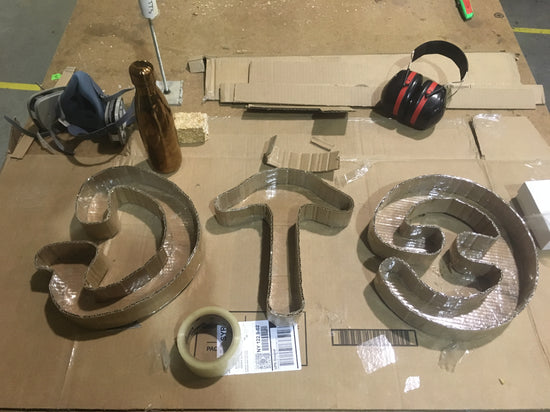I use hundreds of different products every day, but how often do I stop to think about where they come from? Not just geographically, but how did the inception come about in the first place. Last week we posted a blog about the new breakaway corners, so I decided to follow the design team for a day and see the product cycle in action. This post is dedicated to the prototyping process at Ecovative and the team behind the scenes that brings new products to life.

Ecovator Kenneth Lush working on the CAD model for the breakaway corner tooling.
It starts at a desk in our open-style office with Kenneth Lush, the myco-prototyping guru. Kenneth works with CAD software to develop a 3D model and then fits that model into our production process. Some of the designs come from internal design jams and others come from customers who want to manufacture a product or packaging component using Mushroom® materials. We work with the customer to optimize the designs, taking into consideration aesthetics, performance, and cost optimization for our automated production processes.
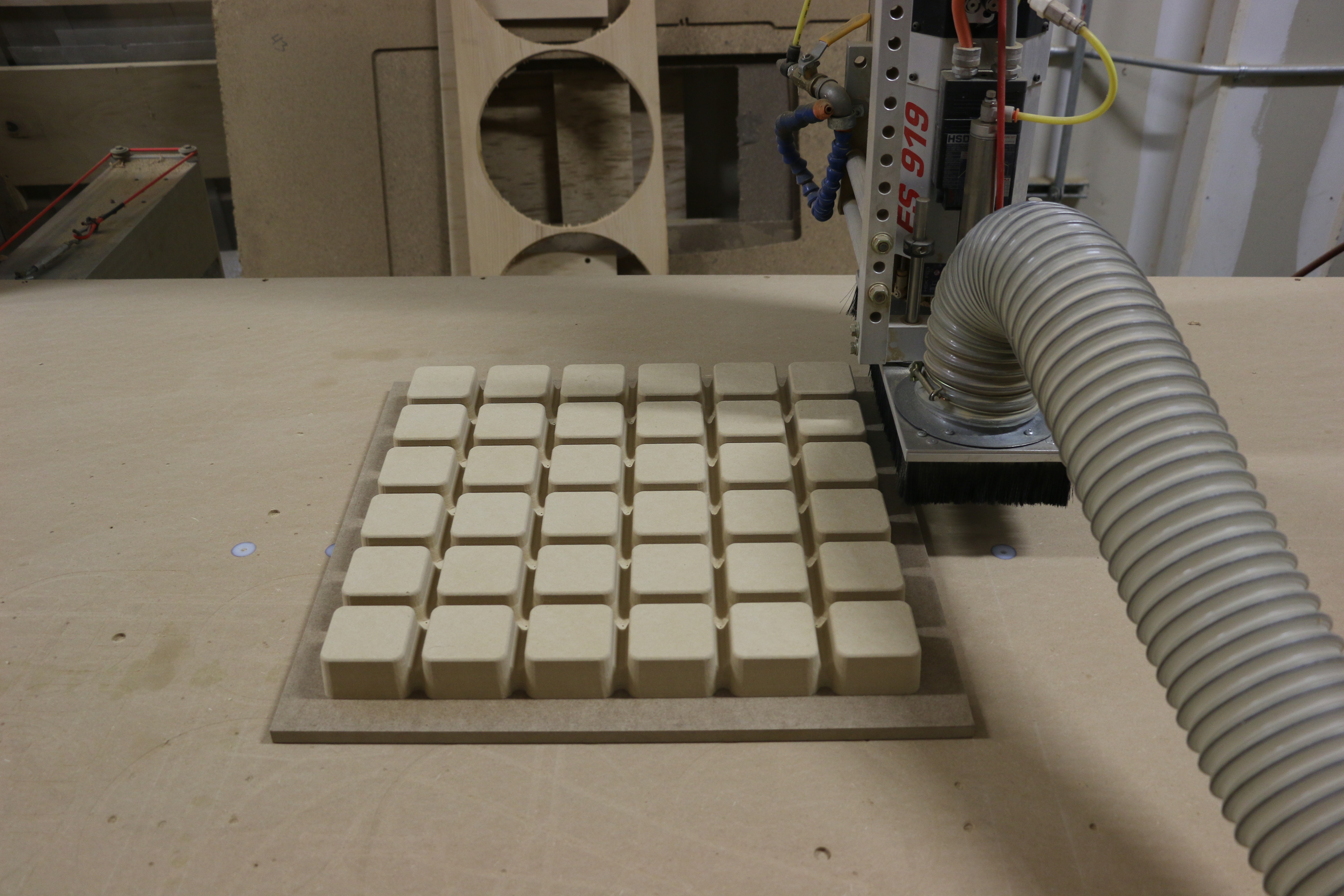
Ecovative’s CNC router pulls its weight in shaping tooling for product development, like this new packaging part.
Once the 3D model is ready to go, we fabricated a 3D shape called a buck. Kenneth then uses the in-house CNC mill or CNC router to mill the 3D shape out of plywood, MDF, or aluminum if it is one of Ecovative’s pressed products like the quarter turn tile.
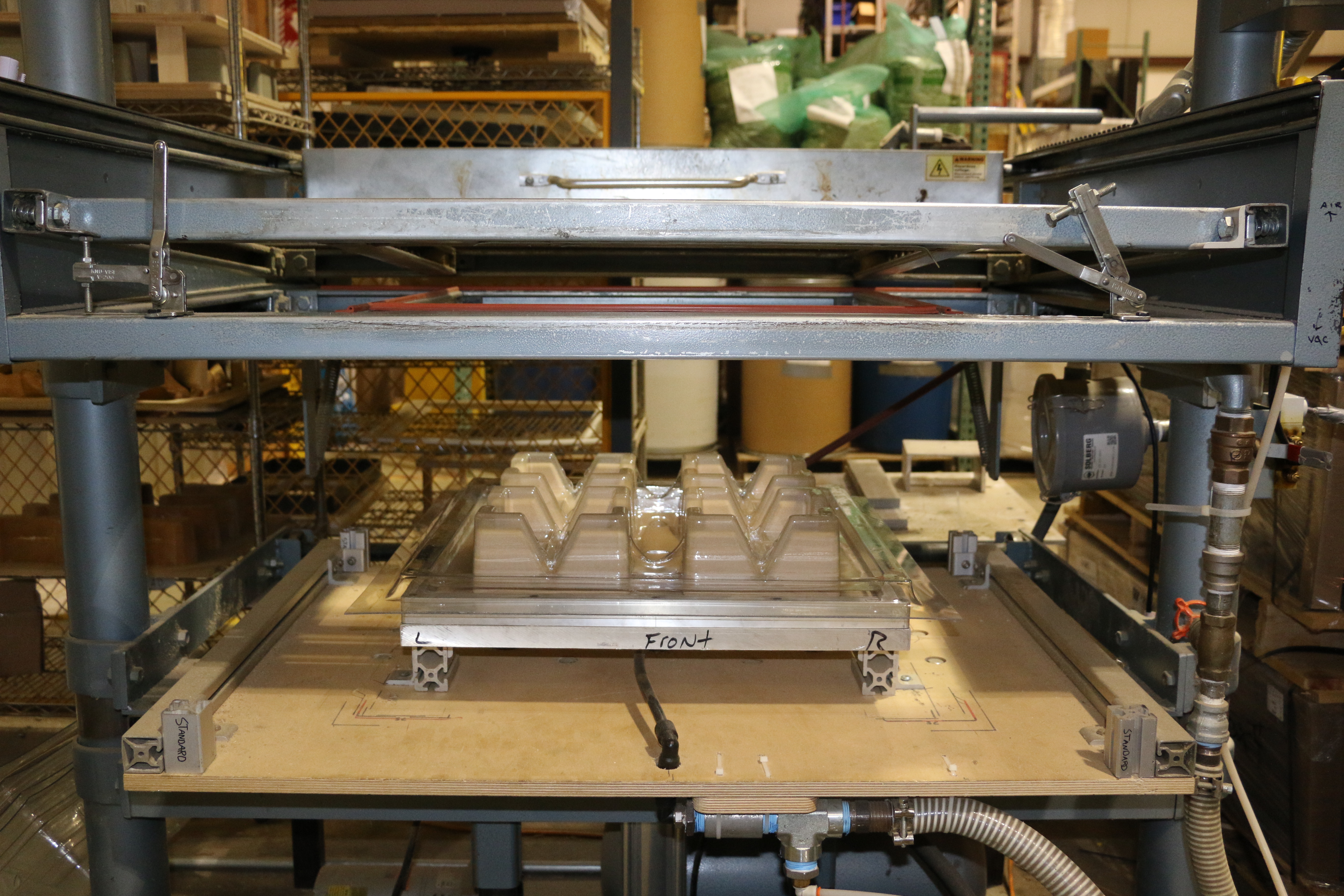
The in house thermoformer after pulling a tool over the breakaway corner “buck”.
Using a thermoformer, the wooden buck gets transformed into a negative of the packaging part that we can fill with Mushroom® material. The machine operator places a sheet of PET, a recyclable transparent plastic, on the thermoformer that is heated to a precise temperature and vacuum formed over the buck. Because this is a prototype part we will only make a few forms and then iterate or make many more once we are happy with the final design. These forms are used hundreds of times at productions scale, and are recycled at the end of the product lifecycle.
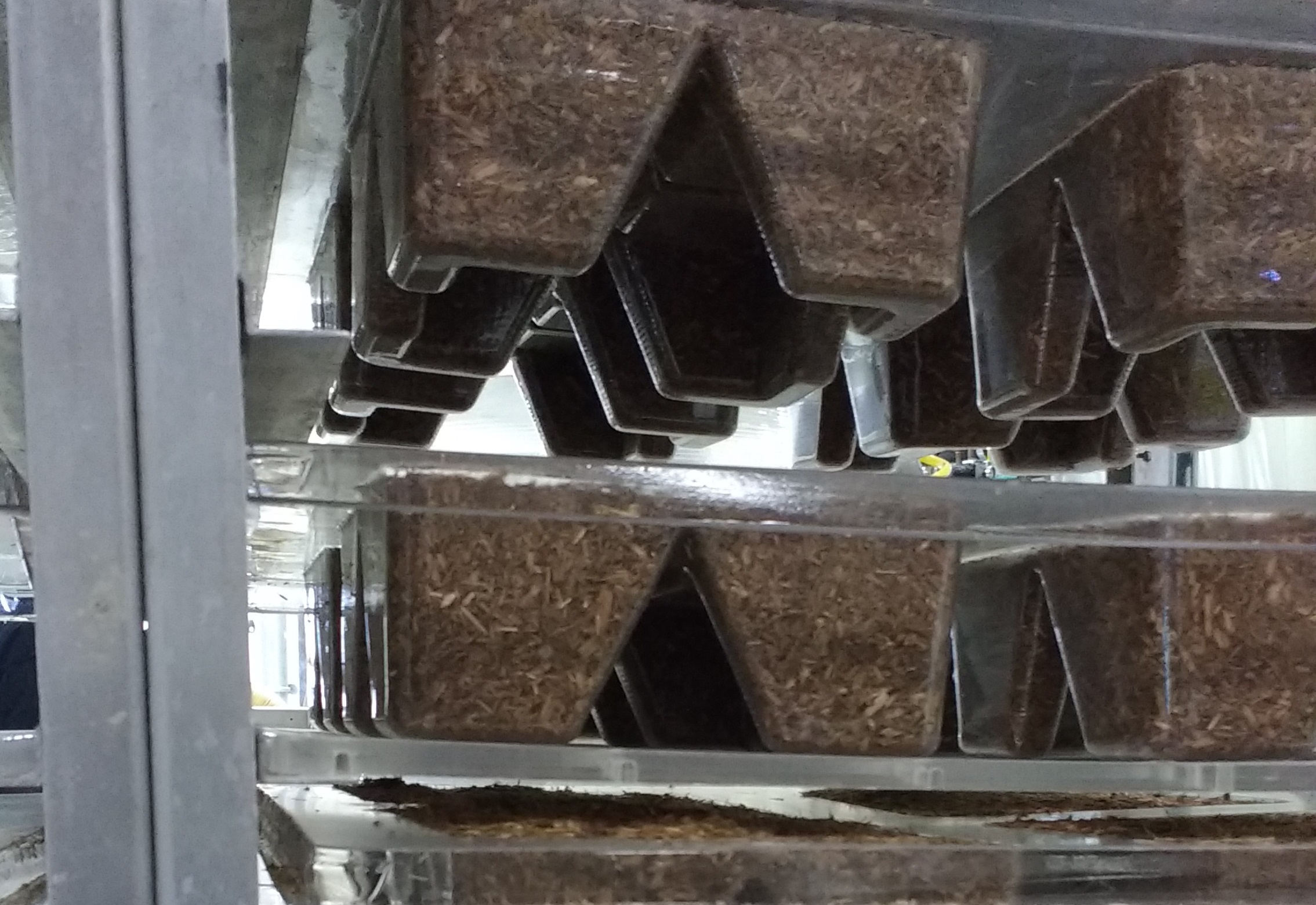
Breakaway corners packaging after being freshly filled in the Troy plant.
The PET forms then head over to our MycoFoam factory in Troy, NY where we run the tooling through our automated filling process. Even though we are making just a few parts, we run through the automated process (rather than filling by hand) to ensure that the parts come out exactly as they would in a full scale production run.
Breakaway corners after leaving the oven and ready to ship.
The parts then go through the growing and drying processes at the plant where they achieve that fluffy natural finish. From here the parts are checked for quality -- we want to make sure that these components are up to standard and will satisfy the customer needs. We compost any parts that don’t make it and reiterate this process to continuously improve the product.
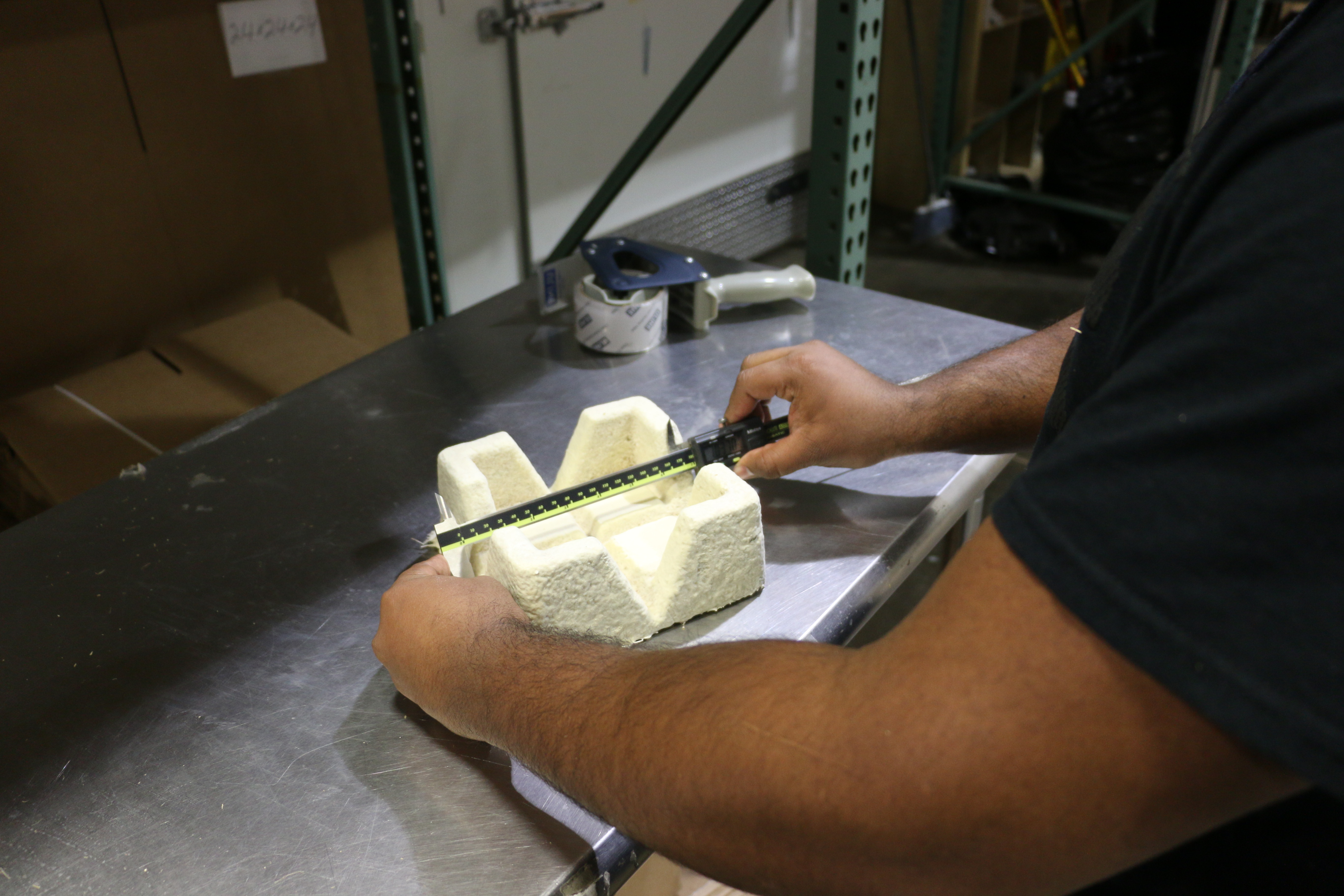
Ecovative checks packaging components for quality control before shipping to the customer.
This iteration process is happening every day at Ecovative. Whether developing a new product for a customer, or working on our own standard products, we are constantly striving to develop better performing, lower cost, and more innovative products. At the end of the day everybody on our team is involved in the process, whether making the parts or testing them in their homes, and you can be too—make your own award winning products at home using GIY materials and contact us at sales@ecovativedesign.com to share your idea.



